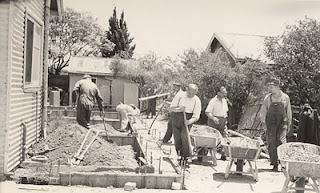Historian Elena Govor has published a book "Russian Anzacs in Australia History" UNSW Press, 2005
At the end of the nineteenth century the population living on the territory of modern day Lithuania was ethnically diverse. Included are names of servicemen who were most likely of Lithuanian ethnic origin. A few had ties to South Australia
Brenka, George Brente
John Brente BrenkaBorn 1887
Place Vilkaviskis, Lithuania? or Volkovysk, Belarus? or Vilkomir (Ukmerge), Latvia?
Ethnic origin Lithuanian? Latvian? Czech?
Religion Roman Catholic
Mother Brenke, Agi
Arrived at Australia 1914 per Ajana
Residence before enlistment Shepperton's Sawmills, Gumeracha, SA
Occupation labourer
Service number 2809 enlisted 8.06.1915 POE Keswick, SA
unit 10th Battalion, 50th Battalion rank Private
place Gallipoli, 1915, Western Front, 1916 casualties WIA 1916 (twice)
final fate DOW 23.08.1916
cemetery 102 Bologne Eastern Cemetery, France
Naturalisation served as Russian subject
Jaks, William FrankBorn 15.04.1882 Place Kovno (Kaunas), Lithuania Ethnic/cultural origin Russian? Lithuanian? Religion Roman Catholic
Residence before arrival at Australia left Russia ca. 1898, lived in England
Arrived at Australia from England? on 17.01.1914 per Heathfield
Residence before enlistment Qld, NSW, SA
Occupation 1916 carpenter, cabinet maker and French polisher
service number 2371 enlisted 10.04.1916 POE Adelaide
unit 5th Pioneer Battalion rank Private
place Western Front, 1917-1918 casualties WIA 1918
final fate RTA 15.01.1919 discharged 27.07.1919
Naturalisation served as Russian subject
Residence after the war 1932 Canberra
Died 16.03.1951, Westlake, Canberra
Members of D Company, 5th Australian Pioneer Battalion near Dranoutre, erecting sheds in Donegal Camp
Zygas, StanleyBorn 14.04.1886 Place Survilishkis (Surviliškis), Kaunas, Lithuania Ethnic origin Lithuanian Religion Roman Catholic
Father Zygas Victor
Residence prior to Australia left Lithuania in 1907, travelled to Germany overland, then to Buenos Aires, then to England and to Australia on vessels
Arrived at Australia from England on 12.1911 per Warrener disembarked at Port Adelaide, SA
Residence before enlistment Tasmania, Port Adelaide, Waikerie, SA
Occupation 1915 sailor, works as agricultural labourer, general handy man, 1917 fitter and turner
Service number 5103 enlisted 28.09.1917 POE Adelaide
unit 32nd Battalion, 50th Battalion rank Private
place Western Front, 1918-1919
final fate RTA 20.12.1919 discharged 5.03.1920
Naturalisation 1915
Residence after the war 1917; 1969 Rostrevor, SA
Wife Kathleen Zygas (née Green), married 1919 in England
Died 14.08.1975
You can look up their records on the National Archives site.

















